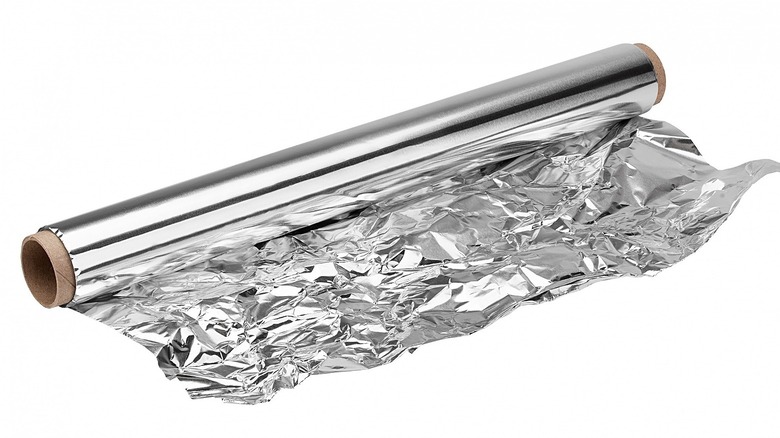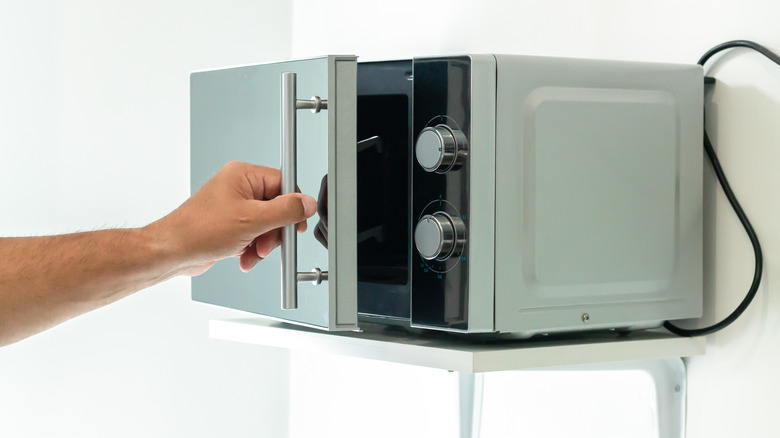The Science Behind Why You Shouldn't Put Aluminum Foil In The Microwave
Aluminum foil, often spoken of as tinfoil, has been around since the early 1900s (per Taste Of Home) and predates the microwave by around half a century, per Popular Mechanics. With both being convenient tools, it was only a matter of time before someone tried to combine them to optimize modern convenience but learned the hard way that it was a bad idea.
Aluminum foil has its uses in domestic cooking, like preventing unnecessary moisture loss, shrinkage, and burning (per Alufoil). Its capacity and effectiveness in wrapping up leftovers and packing lunch are almost unmatched, but using it for storage is usually followed by the need and desire to warm the aluminum foil's contents. While the conventional oven may be suitable for the latter, there is the microwave. It is a small wonder that just under 95% of American households (per Sage Advices) owned one in 2020 already.
It is quick, offers a low-maintenance solution to food heating (when it comes to cleaning up after use), and it is an unparalleled easy-to-use kitchen appliance that is the epitome of home-based convenience. By what factor would the microwave's convenience increase if one could use it on yesterday's foil-wrapped leftovers? Whatever the answer to that is, we should all know by now that foil in a microwave is a no-no.
What happens when you put foil in a microwave
Firstly, the microwave gets its name from its operating principle: microwaves, per Britannica. It is a concept where a cross between radio waves and radar channels through an antenna bounces off the sides of the appliance's interior before agitating the molecules in the food. The effect of the latter is the food heating up.
Microwaves bounce off the microwave ovens' interior because the inner walls of the microwave are metal thick enough to reflect them. On the other hand, aluminum foil is too thin to reflect the waves of these currents and instead acts as a conductor, becoming inundated quickly by the electronic waves and swiftly reaching extreme temperatures (via How Stuff Works). If the foil contains sharp corners and kinks, it creates an environment that allows for the arcing of electricity which will then cause sparks.
When food is wrapped up in foil, sharp edges are likely to occur, but even on the off chance that there are not, the high frequency of electricity passing through it makes it a fire hazard in even the best microwaves — one that has the potential to cost you your microwave if not your house.

